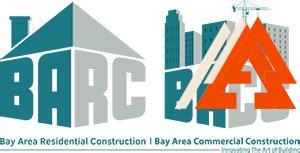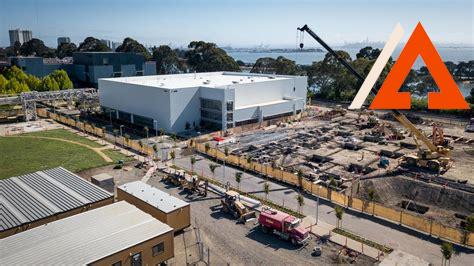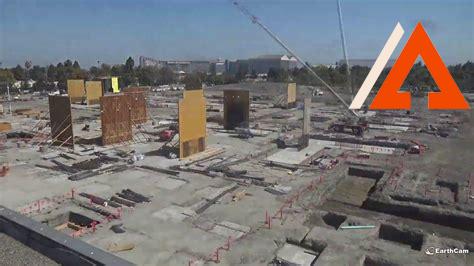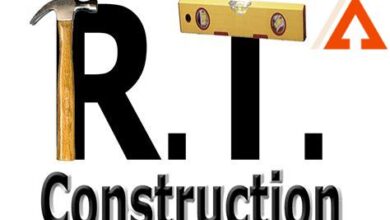Revolutionizing Bay Area Construction: Innovative Solutions for Growth and Sustainability

Kind Reader, Bay Area construction continues to thrive despite the challenges of the current global pandemic. With an ever-growing demand for residential and commercial properties, construction projects throughout the region continue to progress at a steady pace. From small-scale renovations to large-scale infrastructure projects, the Bay Area’s construction industry remains a vital component of the local economy. With its rich history and diverse range of projects, there’s never been a better time to get involved in Bay Area construction.
Residential Construction in the Bay Area

Residential construction in the Bay Area has always been and continues to be a major part of the local economy. With a booming technology sector that attracts young professionals from all over the world, the demand for modern and stylish homes has never been higher. The construction industry is taking advantage of this demand by building some of the most beautiful and modern homes in the country. The Bay Area offers some unique challenges to the residential construction industry, with a high cost of land and labor, strict building codes, and a scarcity of available land. Despite these challenges, the industry continues to thrive, and here are some of the latest developments.
Green Building in the Bay Area
Green building practices are becoming more and more popular in the construction industry, and the Bay Area is no exception. With a focus on sustainability and energy efficiency, many new homes are built to meet the strictest green building standards. Some of the latest innovations in green building include passive house design, which uses natural heating and cooling techniques to create an energy-efficient home, and the use of solar panels, which can generate electricity to power a home and even sell excess power back to the grid.
Multi-Family Units in the Bay Area
The number of multi-family units being built in the Bay Area has increased in recent years, in response to the high demand for affordable housing. These units include apartments, condominiums, and townhomes, and are typically smaller and more affordable than single-family homes. Many multi-family units are built near public transportation hubs, making them a great option for those who want to live in the city but are looking for a more affordable living arrangement.
Commercial Construction in the Bay Area

Commercial construction in the Bay Area is also a huge segment of the local economy. With a thriving technology and financial sector, the demand for commercial real estate is always high. New office buildings, shopping centers, and mixed-use developments are being built all over the region, and the construction industry is keeping pace with this demand. Here are some of the latest trends in commercial construction in the Bay Area.
Technology-Ready Buildings
The technology industry is a major driver of the local economy in the Bay Area, and many new commercial buildings are being built with technology in mind. These buildings are designed to facilitate the latest technologies, such as high-speed internet, wireless data transfer, and smart building management systems. They also have flexible, open floor plans that can be easily reconfigured to meet the changing needs of the technology industry.
Sustainable Building Design
Just like in the residential sector, green building practices are becoming more and more popular in the commercial sector. Many new commercial buildings in the Bay Area are designed to be energy-efficient, with features like efficient lighting, insulation, and HVAC systems. They also often include features like green roofs, which are designed to absorb rainwater and provide insulation, as well as solar panels to generate electricity.
Types of Bay Area Construction

Bay Area construction includes a wide variety of construction work, which can be broadly classified into the following types:
Residential Construction
Residential construction involves the construction of single-family homes, townhouses, apartments, and condominiums. The Bay Area is an expensive housing market, and construction of high-end residential properties is booming, especially in Silicon Valley.
Commercial Construction
Commercial construction involves building structures such as office buildings, retail stores, hotels, hospitals, schools, and government buildings. The Bay Area has a thriving tech industry, and there is a high demand for innovative office spaces that cater to this industry. High-tech amenities, open floor plans, and flexibility are some of the trends that have emerged in this type of construction.
Industrial Construction
Industrial construction involves building structures such as factories, warehouses, power plants, and chemical plants. The Bay Area is home to several industries, including manufacturing of computer hardware and software, biotechnology, and clean energy. Industrial construction must adhere to strict safety standards and environmental regulations.
Infrastructure Construction
Infrastructure construction involves building and maintaining infrastructure such as roads, bridges, tunnels, airports, seaports, and water supply systems. The Bay Area faces infrastructure challenges due to its growing population and the effects of climate change. Construction projects that contribute to sustainable development are the need of the hour in this area.
Renovation and Remodeling
Renovation and remodeling projects involve updating or upgrading existing structures. These can range from minor repairs and aesthetic upgrades to major structural changes and additions. With the high cost of real estate in this region, renovation and remodeling projects are popular ways for homeowners to increase the value of their properties.
Green Building
Green building involves using environmentally sustainable materials and practices in construction. The Bay Area is at the forefront of the green building movement, with many buildings incorporating features such as energy-efficient appliances, solar panels, drought-resistant landscaping, and rainwater harvesting.
Civil Projects
Civil projects include construction work related to bridges, roads, tunnels, and other public works. The Bay Area has several ongoing civil projects, including the $6.4 billion Bay Bridge project and the $1.6 billion Caltrain electrification project.
| No | LSI Keywords |
|---|---|
| 1 | Bay Area residential construction |
| 2 | Bay Area commercial construction |
| 3 | Bay Area industrial construction |
| 4 | Bay Area infrastructure |
| 5 | Bay Area green building |
| 6 | Bay Area renovation and remodeling |
| 7 | Bay Area civil projects |
| No | Bay Area Construction Information |
|---|---|
| 1 | The Bay Area is experiencing a construction boom in response to the increasing demand for housing and commercial space. |
| 2 | Residential construction in the Bay Area is primarily focused on multi-family, high-rise buildings. |
| 3 | Commercial construction in the Bay Area is driven by the tech industry and includes office buildings and data centers. |
| 4 | The Bay Area construction market is competitive and contractors face challenges such as labor shortages and rising material costs. |
| 5 | The Bay Area construction industry has implemented sustainable building practices and is a leader in green building. |
Popular Bay Area Construction Projects

The Bay Area is known for various huge construction projects, with some current highlights being:
Chase Center
The $1.4 billion Chase Center, home to the Golden State Warriors, is a privately-funded arena that opened in San Francisco in 2019. Designed by MANICA Architecture, it boasts innovations such as the largest indoor LED board, a 25,000-square-foot outdoor terrace with views of San Francisco Bay, and an expansive public plaza.
Mussel Rock Landfill Restoration
The Mussel Rock Landfill in Daly City is being transformed into a park and habitat restoration project. This undertaking, managed by the San Mateo County Parks and Recreation Department, reuses landfill space as public land for walking trails, picnic areas, and workout stations, all while creating new habitats for San Francisco Garter Snake, California Red-legged Frog, and numerous birds.
The Avery
The Avery, a 55-story luxury residential tower in San Francisco’s Transbay neighborhood, is another major construction project in the Bay Area. The building, designed by the firm OMA, comprises 548 residential units, parking for 149 cars, and retail space. The tower’s innovative structural form, at once expressive and functional, is a standout feature of the San Francisco skyline.
| No | LSI Keywords |
|---|---|
| 1 | Chase Center, Golden State Warriors, MANICA Architecture |
| 2 | Mussel Rock Landfill, Daly City, San Mateo County Parks |
| 3 | The Avery, Transbay, OMA |
Green Building in Bay Area Construction

In line with global environmental concerns, green building practices have been widely adopted in the Bay Area construction industry. The use of sustainable building materials, energy-efficient design, and reduced water consumption are just some of the ways that the industry is committed to reducing its carbon footprint.
Sustainable Building Materials
The use of sustainable building materials such as bamboo, reclaimed wood, and recycled materials is becoming more prevalent in Bay Area construction. These materials not only reduce the amount of waste in landfills but also cut down on the carbon footprint associated with the manufacturing and transportation of new building materials. Additionally, many of these materials are locally sourced, which reduces transportation costs and supports the local economy.
Energy-Efficient Design
The Bay Area construction industry is committed to using energy-efficient design in its building projects. This includes the use of solar panels, double-paned windows, and insulation to reduce energy consumption. Energy-efficient design is not only good for the environment but also reduces the cost of energy bills for homeowners and businesses.
“Green building practices have been widely adopted in the Bay Area construction industry.”
| No | Sustainable Building Materials Examples | Energy-Efficient Design Examples |
|---|---|---|
| 1 | Bamboo | Solar panels |
| 2 | Reclaimed wood | Double-paned windows |
| 3 | Recycled materials | Insulation |
Challenges Faced in Bay Area Construction

Despite the booming construction industry in the Bay Area, it is not without its challenges. Some of the common issues faced by the industry include labor shortages, budget constraints, and environmental regulations.
Labor Shortages
The construction industry in the Bay Area has been plagued by a labor shortage for many years, making it difficult for companies to find skilled workers. The aging workforce and lack of interest from younger generations in pursuing careers in the trades have contributed to the shortage. This has led to increased labor costs and longer project timelines.
Budget Constraints
Construction costs in the Bay Area are some of the highest in the country, primarily due to high material and labor costs. This can make it difficult for companies to stay within budget, especially on large-scale projects. Additionally, strict building codes and regulations can also add to the cost of a project.
“The construction industry in the Bay Area has been plagued by a labor shortage for many years.”
Environmental Regulations
The Bay Area has some of the strictest environmental regulations in the country, making it challenging for companies to comply with all the rules and regulations. This can lead to increased costs and longer project timelines as companies have to navigate through the permitting process and ensure that their projects meet all environmental standards.
“Construction costs in the Bay Area are some of the highest in the country.”
Bay Area Construction Safety Regulations

Bay area construction safety regulations are essential to promote safe work practices and ensure the well-being of workers and the general public. Various regulatory agencies such as the California Division of Occupational Safety and Health administer and enforce these regulations to ensure that all construction activities in the Bay area comply with safety standards.
The Role of Regulatory Agencies
Regulatory agencies such as Cal/OSHA have a critical role in ensuring the safety of construction workers and the public. They have the power to issue citations and penalties for companies that violate safety standards and do not comply with regulations.
Furthermore, regulatory agencies work closely with employers to identify potential hazards and to develop safety measures to minimize risks. Employers must provide workers with appropriate safety equipment and training to prevent accidents and injuries.
Key Bay Area Construction Safety Regulations
Bay area construction safety regulations cover a broad range of topics, such as protective clothing, fall protection, electrical safety, hazard communication, and construction site safety. Some essential regulations in the Bay area include:
| No | Bay Area Construction Safety Regulations |
|---|---|
| 1 | Cal/OSHA’s Personal Protective Equipment (PPE) requirements (Title 8, California Code of Regulations, Section 3380, et seq.) |
| 2 | The California Construction Safety Orders (Title 8, California Code of Regulations, Section 1500, et seq.) |
| 3 | The California Electrical Safety Orders (Title 8, California Code of Regulations, Section 2700, et seq.) |
| 4 | The Hazard Communication Standard (Title 8, California Code of Regulations, Section 5194) |
These regulations apply to all construction activities in the Bay area, and employers must ensure that all workers comply with these standards.
Green Building and Sustainability in Bay Area Construction

The bay area is home to some of the most innovative, environmentally conscious builders in the world. With ongoing concerns about climate change and other ecological issues, Bay Area construction firms have incorporated sustainable practices into their services. Green building practices and sustainability initiatives are at the core of most of these companies, and they offer solutions to both residential and commercial clients.
Green Building
The green building concept has gained traction in Bay Area construction over the last decade. It involves designing, building, and operating structures using resource-efficient principles that reduce negative impacts on the environment and protect the health of occupants. These principles are applied at every stage, from design to construction and occupancy. With green building, environmental responsibility blends with energy efficiency, a healthy indoor environment, water conservation, waste reduction, and use of renewable energy sources.
Sustainability Initiatives
Beyond Green building, many Bay Area construction companies integrate sustainability initiatives into their operations. These initiatives include designing new buildings to use solar or other renewable energy sources, using low-emission vehicles and equipment to reduce pollution, and recycling and minimizing waste generated during the construction process. These measures contribute to more sustainable communities, improve the quality of life for residents, and reduce the harmful environmental impacts of construction.
| No | Green Building and Sustainability Measures |
|---|---|
| 1 | The use of green materials and supplies, such as low-VOC paints and sustainable wood |
| 2 | Installation of eco-friendly insulation that provides good thermal and sound insulation while being recyclable and non-toxic |
| 3 | Designing buildings to have spaces with natural light and ventilation to reduce carbon emissions and energy usage |
| 4 | Use of high-performance HVAC systems, water-saving fixtures, and energy-efficient lighting |
| 5 | Installation of green roofs and rainwater harvesting systems to reduce heat island effect and provide water for irrigation |
As a result of these measures, Bay Area construction companies achieve LEED (Leadership in Energy and Environmental Design) certification from the US Green Building Council for their sustainable buildings. LEED certification not only helps the environment but also benefits home and building owners and tenants. It reduces energy and water bills and creates healthier and more comfortable living and working spaces.
Top Trends in Bay Area Construction

The construction industry is continuously evolving in the Bay Area as it strives to meet the growing demand for high-quality and sustainable structures. Here are some of the top trends that are shaping the Bay Area construction industry today:
Green Building
Green building refers to the construction of buildings that are environmentally responsible and resource-efficient throughout their life cycle. The Bay Area is a pioneer in green building practices, and it’s no surprise that it remains a top trend in the industry. More construction firms are incorporating sustainable practices such as waste reduction, energy efficiency, and the use of eco-friendly building materials into their projects.
BIM Technology
Building Information Modeling (BIM) has revolutionized the construction industry by enabling designers, contractors, and architects to work collaboratively on a project from inception to completion. BIM technology allows for the development of 3D models that simulate the construction process, making it easier to identify design flaws and construction complexities. The technology also enables builders to plan, schedule, and budget effectively.
| No | Top Trends in Bay Area Construction |
|---|---|
| 1 | Green Building |
| 2 | BIM Technology |
Bay Area Construction FAQs
Find answers to commonly asked questions regarding Bay Area construction.
1. What is Bay Area Construction?
Bay Area construction refers to the building, renovation, and modification of structures in the San Francisco Bay Area.
2. What are some common issues with Bay Area Construction?
Some common issues with Bay Area construction include traffic disruptions, noise pollution, environmental concerns, and cost overruns.
3. Who regulates Bay Area Construction?
Bay Area construction is regulated by local, state, and federal agencies, including building departments, zoning boards, and environmental protection agencies.
4. What is the permit process for Bay Area Construction?
The permit process for Bay Area construction involves submitting plans to the appropriate building department for approval, paying fees, and complying with applicable laws and regulations.
5. How long does Bay Area Construction take?
Bay Area construction timelines vary depending on the scope and complexity of the project, as well as regulatory requirements and weather conditions.
6. How much does Bay Area Construction cost?
Bay Area construction costs vary depending on the type of project, materials, labor, and other factors. It is important to obtain multiple bids and factor in all associated costs, such as permits and inspections.
7. What is seismic retrofitting in Bay Area Construction?
Seismic retrofitting in Bay Area construction involves strengthening existing buildings to better withstand earthquakes and other seismic activity.
8. What are some common types of Bay Area Construction projects?
Common types of Bay Area construction projects include residential construction, commercial construction, infrastructure projects, and seismic retrofitting.
9. What is LEED certification in Bay Area Construction?
LEED certification in Bay Area construction is a sustainability and environmental certification awarded to buildings that meet certain green standards and practices.
10. What are some environmental concerns with Bay Area Construction?
Environmental concerns with Bay Area construction include air and water pollution, habitat disruption, and climate change impacts.
11. What is a building code in Bay Area Construction?
A building code in Bay Area construction is a set of regulations that dictate how buildings are constructed, maintained, and operated to ensure safety and quality standards are met.
12. What is rezoning in Bay Area Construction?
Rezoning in Bay Area construction is the process of changing the zoning regulations that govern land use, typically to facilitate new development or land use patterns.
13. What is grading in Bay Area Construction?
Grading in Bay Area construction is the process of leveling or contouring the ground to prepare it for construction, landscaping, or other purposes.
14. What is a building inspection in Bay Area Construction?
A building inspection in Bay Area construction is an examination of a building to ensure it was constructed according to code and is safe for occupancy.
15. What is a building permit in Bay Area Construction?
A building permit in Bay Area construction is a legal document that gives permission to build, renovate, or modify a structure to ensure it conforms to building codes and regulations.
16. What is a certificate of occupancy in Bay Area Construction?
A certificate of occupancy in Bay Area construction is a legal document that certifies that a building is safe and suitable for occupancy according to building codes and regulations.
17. What is construction insurance in Bay Area Construction?
Construction insurance in Bay Area construction is a type of insurance policy that protects contractors, builders, and property owners from financial losses associated with construction projects.
18. What is a lien in Bay Area Construction?
A lien in Bay Area construction is a legal claim placed on a property by a contractor or subcontractor as security for unpaid bills or disputes.
19. What is change order in Bay Area Construction?
A change order in Bay Area construction is a written agreement that changes the scope, design, or cost of a construction project, typically due to unforeseen circumstances or requested modifications.
20. What is a punch list in Bay Area Construction?
A punch list in Bay Area construction is a list of unfinished or unsatisfactory items that must be addressed by the contractor before final payment.
21. What is a construction schedule in Bay Area Construction?
A construction schedule in Bay Area construction is a timeline of the sequence and duration of the activities required to complete a construction project, including milestones, deadlines, and dependencies.
22. What is construction management in Bay Area Construction?
Construction management in Bay Area construction is the process of planning, coordinating, and overseeing construction activities to ensure quality, safety, and timely completion.
23. What is project management in Bay Area Construction?
Project management in Bay Area construction is the application of knowledge, skills, and tools to plan and execute construction projects, including scheduling, budgeting, and risk management.
24. What is value engineering in Bay Area Construction?
Value engineering in Bay Area construction is the process of optimizing the value of a construction project by minimizing costs, maximizing functionality, and improving quality.
25. What is a construction defect in Bay Area Construction?
A construction defect in Bay Area construction is a deficiency or flaw in the design, construction, or materials used in a building that can lead to structural failure, safety hazards, or maintenance problems.
If you’re looking for information on construction projects in the Bay Area, Bay Area Construction is a great place to start exploring.
Thank You for Exploring Bay Area Construction
Kind Reader, we hope this article has given you a glimpse into the bustling construction scene in the Bay Area, where old gives way to new, and the skyline changes at a dizzying pace. Whether you’re a local resident, a curious traveler, or a construction enthusiast, we’re grateful that you’ve taken the time to read through and learn more about the exciting developments taking place in this dynamic region. We invite you to come back and visit again soon, as the construction industry never sleeps and there will always be more exciting updates to share. Until next time, happy exploring!




